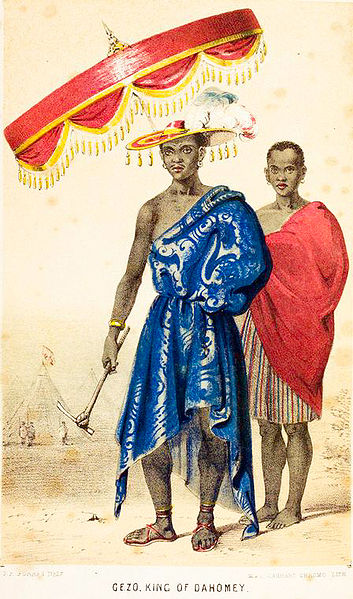Ghezo, also spelled Gezo, was King of Dahomey from 1818 until 1859. Ghezo replaced his brother Adandozan as king through a coup with the assistance of the Brazilian slave trader Francisco Félix de Sousa. He ruled over the kingdom during a tumultuous period, punctuated by the British blockade of the ports of Dahomey in order to stop the Atlantic slave trade.
A depiction of King Ghezo in an 1851 publication
Symbol of Guezo on place goho
Procession of the wealth of King Ghezo, painted in 1851 by Frederick E. Forbes
Dahomey Amazons became a significant part of the military under Ghezo
The King of Dahomey was the ruler of Dahomey, an African kingdom in the southern part of present-day Benin, which lasted from 1600 until 1900 when the French Third Republic abolished the political authority of the Kingdom. The rulers served a prominent position in Fon ancestor worship leading the Annual Customs and this important position caused the French to bring back the exiled king of Dahomey for ceremonial purposes in 1910. Since 2000, there have been rival claimants as king and there has so far been no political solution. The Palace and seat of government were in the town of Abomey. Early historiography of the King of Dahomey presented them as absolute rulers who formally owned all property and people of the kingdom. However, recent histories have emphasized that there was significant political contestation limiting the power of the king and that there was a female ruler of Dahomey, Hangbe, who was largely written out of early histories.

Tapestry depicting several kings of Dahomey and their regnal years.
Image: Houégbadja dessin de Cyr Raoul Sehou houindo
Image: Ghezo King of Dahomey (cropped)
Image: Behanzin 1895








